- Softcover: 112 Seiten
- Verlag: Bundesforschungsinstitut für Kulturpflanzen (JKI)
- Autor: Jannicke Gallinger
- Auflage: 1. Aufl., erschienen am 11.06.2020
- ISBN-10: 3-95547-093-8
- ISBN-13: 978-3-95547-093-7
- Größe und/oder Gewicht: 21,0 x 14,0 cm
Influence of primary and secondary plant metabolites on the migration and feeding behavior of Cacopsylla pruni, the vector of European Stone Fruit Yellows
Autoren: Jannicke Gallinger12,95 €

HONIGHÄUSCHEN (BONN) – The plum psyllid Cacopsylla pruni is a univoltine herbivore, specialized on Prunus and coniferous tree species. During their lifetime, plum psyllids are alternating twice between their deciduous and evergreen hosts. For reproduction, C. pruni adults migrate to stone fruit orchards in spring, where they lay their eggs exclusively on several Prunus species. Adults of the old generation die after mating and oviposition. Young adults emerge from egg to adults during April, May and June. After several days the young adults (called emigrants) emigrate to conifers in higher regions until they remigrate (remigrants) to Prunus orchards in the next spring. Plum psyllids transmit the Phytoplasma Candidatus Phytoplasma prunorum and are therefore of significant importance for fruit growers. In host plants, the wall-less bacterium is restricted to the phloem and causes the European Stone Fruit Yellows (ESFY). Psyllids acquire the bacteria during feeding on the phloem of infected Prunus trees. After multiplication of the phytoplasma inside the vector, plum psyllids transmit the disease to non-infected Prunus trees by salivary excretion during feeding. C. pruni is distributed all over Europe and bordering areas. ESFY is one of the most serious plant diseases in European fruit production, causing severe plant damage leading to a poor harvest and high economic losses. Peaches (Prunus persica), apricots (Prunus armeniaca) and Japanese plums (Prunus salicina) are worst affected by typical symptoms, such as reduced dormancy, chlorotic leaf roll and premature ripening of the fruits. Trees of these species suffer severely from the infections, decline and finally die. Commonly indigenous Prunus species, such as blackthorn (Prunus spinosa) und wild plums (Prunus cerasifera, Prunus insititia) show more tolerance towards ESFY infections. Likewise, most of the cultivated varieties of European plums (Prunus domestica) do not develop severe symptoms. To date no effective control agents or cures for phytoplasma diseases are available. The control of vector insects is an alternative strategy. Psyllid behavior could be manipulated with infochemicals and prevent C. pruni from feeding and oviposition on stone fruit crops and thus reduce the number of new infections. In this thesis I investigated the impact of plant-borne volatiles and phloem chemistry on the behavior of C. pruni as yet barely anything is known about the biology and chemical ecology of plum psyllids. The field monitoring presented in this thesis proved a preference of C. pruni for some Prunus species over others. P. insititia was identified as a favored host of C. pruni, in contrast very low numbers of plum psyllids were detected on P. insititia trees, which was therefore categorized as a non-preferred host for C. pruni. In the studies of this thesis, I compared the volatile organic compounds and the phloem sap composition of these two Prunus species and Conifers, to identify signals that were important for host plant preference of C. pruni. I demonstrated the detection of volatile compounds characteristic for Prunus trees as well as characteristic coniferous host volatiles of female plum psyllid antenna by electroantennography. Olfactometer tests revealed that this preference is not only based on olfactory cues. Additionally, gustatory cues seem to play a major role in host acceptance and preference. C. pruni nymphs showed greater development success on preferred wild plum species (P. insititia) compared to nymphs on non-preferred peach trees (P. persica). Next to effects on psyllid development, I detected differences in the phloem composition of both plant species. My research on the feeding behavior of plum psyllids on coniferous diets revealed that although C. pruni nymphs showed feeding on conifer needles, they are not able to develop on conifers. In contrast, adult plum psyllids survived longer on spruce (Picea abies) and silver fir (Abies alba) than without food supply. I concluded that adult C. pruni need evergreen tree species as resource of water and nutrition during overwintering. Furthermore, I investigated the impact of Ca. P. prunorum infections of Prunus trees on the interaction between vector insects and their host plants. For this purpose, I recorded the feeding behaviour of C. pruni nymphs on infected and non-infected P. insititia and P. persica trees by electropenetrography. Interestingly, the average duration each nymph spend with the ingestion of xylem was shorter on infected than on non-infected Prunus trees. I found no influence on the average duration of phloem phases per nymph due to the infection status of both Prunus species. Chemical analysis of the phloem centrifugates showed that the chemical composition of trees infected with Ca. P. prunorum was indistinguishable from the composition of non-infected Prunus trees. In accordance, the development of C. pruni nymphs was not influenced by the infection of host plants. The knowledge obtained in this thesis is essential for the development of innovative and selective control strategies against C. pruni based on semiochemicals, such as push-pull and attractand-kill strategies. Further breeding programs of resistant Prunus cultivars should take the findings of this work into account.
Über „Influence of primary and secondary plant metabolites on the migration and feeding behavior of Cacopsylla pruni, the vector of European Stone Fruit Yellows“
Das vorliegende Sachbuch zu Themen aus Umwelt und Natur „Influence of primary and secondary plant metabolites on the migration and feeding behavior of Cacopsylla pruni, the vector of European Stone Fruit Yellows“ wurde erarbeitet und verfasst von Jannicke Gallinger. Dieses Sachbuch erschien am 11.06.2020 und wurde herausgegeben von Bundesforschungsinstitut für Kulturpflanzen (JKI).
Bücher wie „Influence of primary and secondary plant metabolites on the migration and feeding behavior of Cacopsylla pruni, the vector of European Stone Fruit Yellows“ sind im Onlineshop des Honighäuschens bestellbar. Online bestellte Fachbücher zur Imkerei und zu anderen Themen der Umwelt und des Artenschutzes sind zu den üblichen Öffnungszeiten auch direkt im Buchladen Bundesamt für magische Wesen in Bonn, der Stauhauptstadt von Nordrhein-Westfalen abholbar und werden auf Wunsch verschickt.
Das Thema Bienensterben, Rückgang von Insekten und allgemeines Artensterben ist in aller Munde und das Honighäuschen als frühere Bioland Imkerei hat sich von Anfang an daran beteiligt. Mehr als 35 Jahre Imkereierfahrung nahmen ihren Anfang 1982 mit den ersten eigenen Bienen.
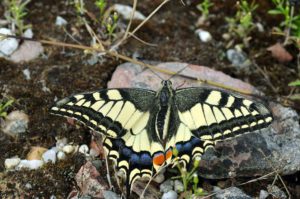
Der zehnjährige Junge, der 1977 einem Hamburger Imker über die Schulter schaute; der Fünfzehnjährige, der mit der Imkerei in Zeiten begann, in denen es noch keine Varroamilbe gab; der achtzehnjährige Fahrschüler, der lernte, dass man die Windschutzsscheibe seines Autos nach einer längeren Fahrt von Insekten säubern muß; der zwanzigjährige Student, der für seine Bienen einen Platz in Bonn suchte; der dreißigjährige Berufsimker, der seinen Bienen quasi eine Gutenachtgeschichte erzählte und sich den Kopf zerbrach, wie man die Umwelt mit ihren Bienen, Wespen, Schmetterlingen und andere blütenbesuchenden Insekten vor den Machenschaften der Agrargiftindustrie und der Gleichgültigkeit agrarindustriehöriger Politiker schützt; der Imker, der nicht nur auf dem Weihnachtsmarkt Bonn die Öffentlichkeit suchte, um bei Führungen an den Bienen auf dem Dach der Bundeskunsthalle zu erleben, dass Kinder (und deren Helikoptermuttis!) Angst vor Schmetterlingen hatten, bis hin zum Begleiter von Forschungsprojekten zu den Riesenhonigbienen Nepals oder den Killerbienen Afrikas, stellt fest, dass etwas sehr im Argen liegt in unserem Umgang mit der Umwelt.
Es sollte jedem bewußt sein, dass die Haltung „Natur ja, aber bitte woanders!“ nicht in Ordnung ist.
Die wunderschöne Welt der Natur
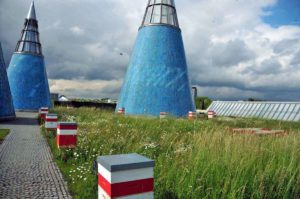
In unserem Online-Buchshop finden Sie viele Bücher wie „Influence of primary and secondary plant metabolites on the migration and feeding behavior of Cacopsylla pruni, the vector of European Stone Fruit Yellows“, die Ihnen die fantastische Welt der Bienen, Wespen, Ameisen, Hornissen und Schmetterlinge sowie anderer Insekten näherbringen.
Aber nach wie vor stehe ich Ihnen auch gern zu einem Gespräch oder zu einer Beratung im Umgang mit Bienen, Wespen, Hornisse, Wildbienen und Hummeln zur Verfügung, wenn Sie Fragen haben. Besuchen Sie uns in Bonn im Bundesamt für magische Wesen.
Und natürlich gibt es auch weiterhin Honig, Bienenwachskerzen und Met bei uns und zwar das ganze Jahr – nicht nur zu Weihnachten.
| Gewicht | 200 g |
|---|---|
| Größe | 21 × 14 cm |
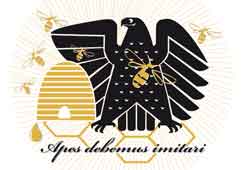

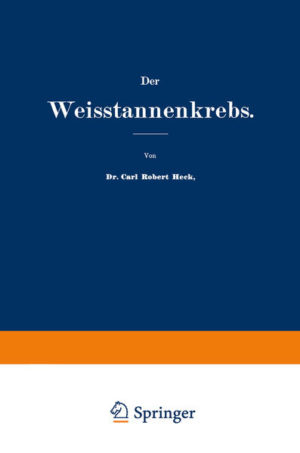

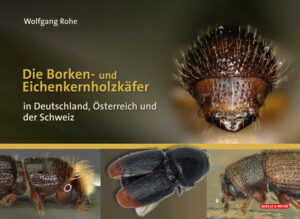
Bewertungen
There are no reviews yet